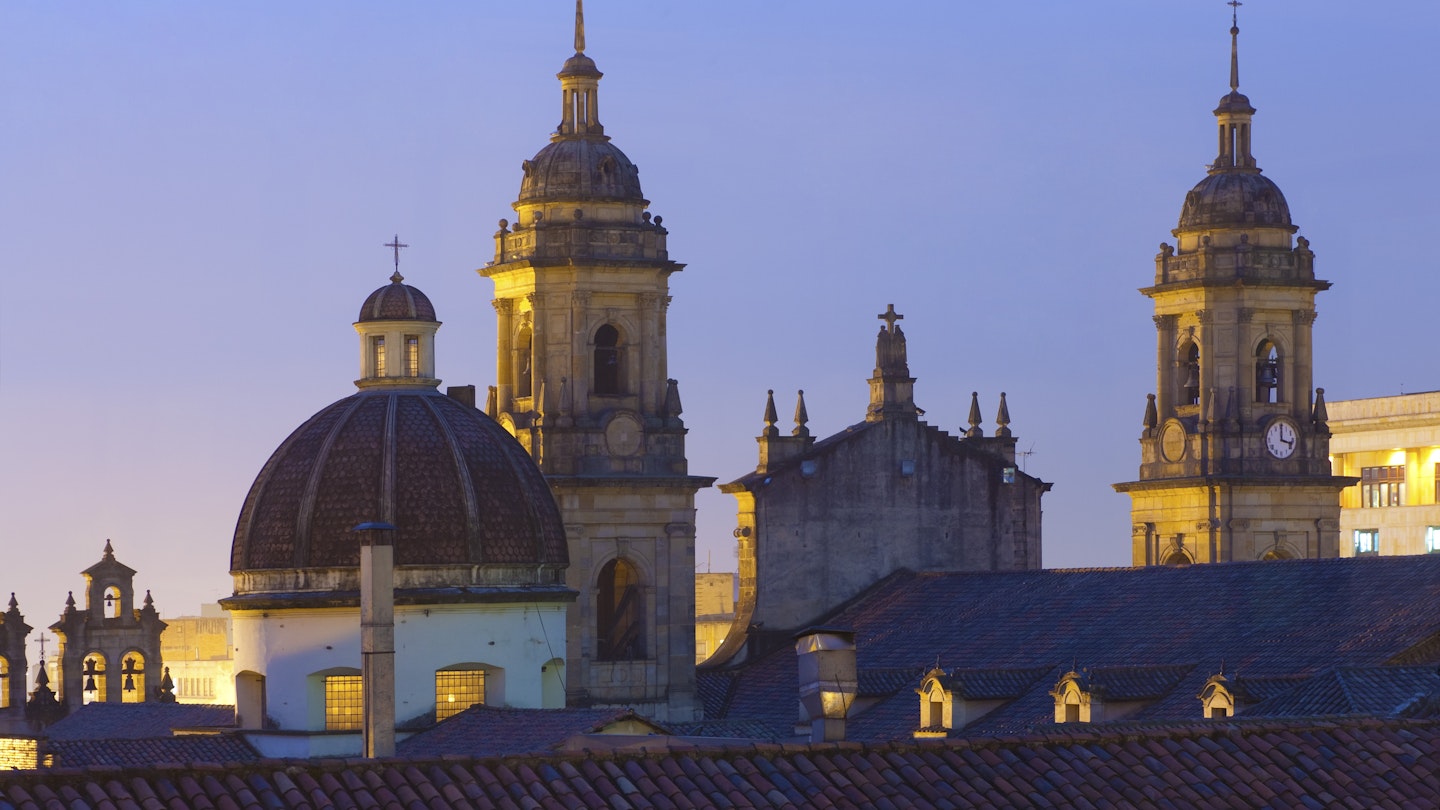Exploring Traditional Colombian Breakfasts in Bogotá
Typical Colombian breakfasts vary from region to region. From hot meaty soups to cornbread filled with cheese, you can explore the country bite by bite within the bustling streets of Bogotá. All made with local ingredients, here are five must-try traditional Colombian breakfasts.
Arepas: Colombia’s favorite go-to food
Arepas – a national favorite and probably one of the first Colombian culinary words you’ll learn. Loosely translated as ‘corn cakes’, arepas are made from yellow or white ground corn and are as diverse as the country itself, with each region preparing them differently – from fried and crispy to sweet, soft, and cheesy. Within the coffee zone, paisas like their arepas thin, flat, and crunchy, smothered in butter, with cheese on the side. Arepas from the central Andean region can be sweet, such as arepa de choclo, or stuffed or topped with cheese, eggs, ham, chicharrón (fried pork rind), beef, or chicken. Along the Caribbean coast, arepas are chubby, resembling a hamburger patty and heavy on salted cheese, or sinfully greasy and deep-fried with a cooked egg inside, such as arepa de huevo.
The arepa list is endless and can be found on almost every corner in Bogotá. Get a taste of authentic Caribbean cuisine at Narcobollo (narcobollo.com) or Gaira Café (gairacafe.co), which is owned by famous Colombian singer, Carlos Vives. For freshly grilled cheese-and-ham arepas, stop at Puerto Arepa de la Primera (facebook.com/PuertoArepadelaPrimera).
Changua: nutritious milk soup for the soul
The indigenous tribes that once roamed the central Andes may have all disappeared, but a couple of their culinary traditions haven’t been lost. Changua, a comforting soup made with milk, poached eggs, and green onions, is easy on the stomach and suitable for vegetarians. Each recipe is slightly different, but most come with a generous garnish of coriander and pieces of crusty – often stale – bread that are plonked or grated into the milky broth. The soup is generally enjoyed with a couple of almojábanas, cheese rolls best served straight out of the oven and eaten religiously in the regions of Boyacá and Cundinamarca. Made with corn flour, eggs, and cuajada (white cheese made from unpasteurized milk), these crispy pastries are a perfect match to the homey soup.
Try a snug combo at La Puerta Falsa, the oldest cafe in the city; it’s no fake and popular for a good reason. Another downtown favorite is the 80-year-old bakery Pasteleria La Florida (facebook.com/PasteleriaFlorida).
Aguapanela and queso fresco: a Colombian classic
A classic and light Colombian breakfast is a mug of steaming aguapanela and a large piece of locally produced queso fresco (soft, fresh white cheese). Aguapanela is a sweet drink made from unrefined sugarcane juice; it’s enjoyed throughout the country. The ‘warmth’ of the drink depends on the altitude: hot and soothing in the mountains, icy and refreshing along the coast. In Bogotá, the ritual is to drop the cheese into the aguapanela (or hot chocolate). The cheese effortlessly melts in the hot drink, and using a spoon, the sweet and cheesy gooeyness is devoured. For a heartier breakfast, you can combine the aguapanela with huevos pericos (eggs scrambled with tomatoes and onions) and, depending on the region, either a bollo, arepa, or almojábana. Bollos, also known as envuelto de maíz (literally ‘wrapped corn’), are parcels of ground maize that’s mixed with cheese, enclosed in leaves, and boiled.
Most traditional desayunaderos (breakfast restaurants), such as the little corner joint, Hibiscus Cafe, serve authentic aguapanela and its accompaniments.
Caldo de costilla: a soup to raise the dead
The night before was long and you wake up with a splitting headache. Forget painkillers or gallons of water; rather, slurp up a bowl of comforting caldo de costilla, a typical dish from the Andean region that’s eaten nationwide. This slow-cooked broth made with beef ribs, carrots, potatoes, garlic, and cilantro is also known as levantamuertos (literally ‘raise the dead’) due to its superpower ability to cure guayabos (hangovers) and ailments. Colombians swear by its curative properties and the soup is sold in most restaurants, especially in Bogotá’s party zones. It is best enjoyed with a couple of warm arepas.
You’ll find many believers hanging out at the famous 24-hour restaurant, Cañón del Chicamocha, waiting for the magic doctor to kick in.
Tamales: corny meat on a leaf
Originating in pre-Colombian times, tamales have remained a beloved Mesoamerican dish and, like arepas, they have many regional variations. Wrapped in a green plantain leaf, chock-full of savory meaty ingredients – there can be as many as three different kinds of meat – and enveloped in a soft doughy mix of corn flour and vegetable marinade, tamales are traditional and extremely hearty. The most famous tamales come from the Tolima region and are loved so much that there’s even a special day dedicated to them: 24 June. The meal is usually washed down with a steaming cup of either aguapanela or hot chocolate.
The city’s best tamal tolimense can be found at La Puerta Falsa, with Desayunadero de la 42 serving a genuine tamal santandereano.





